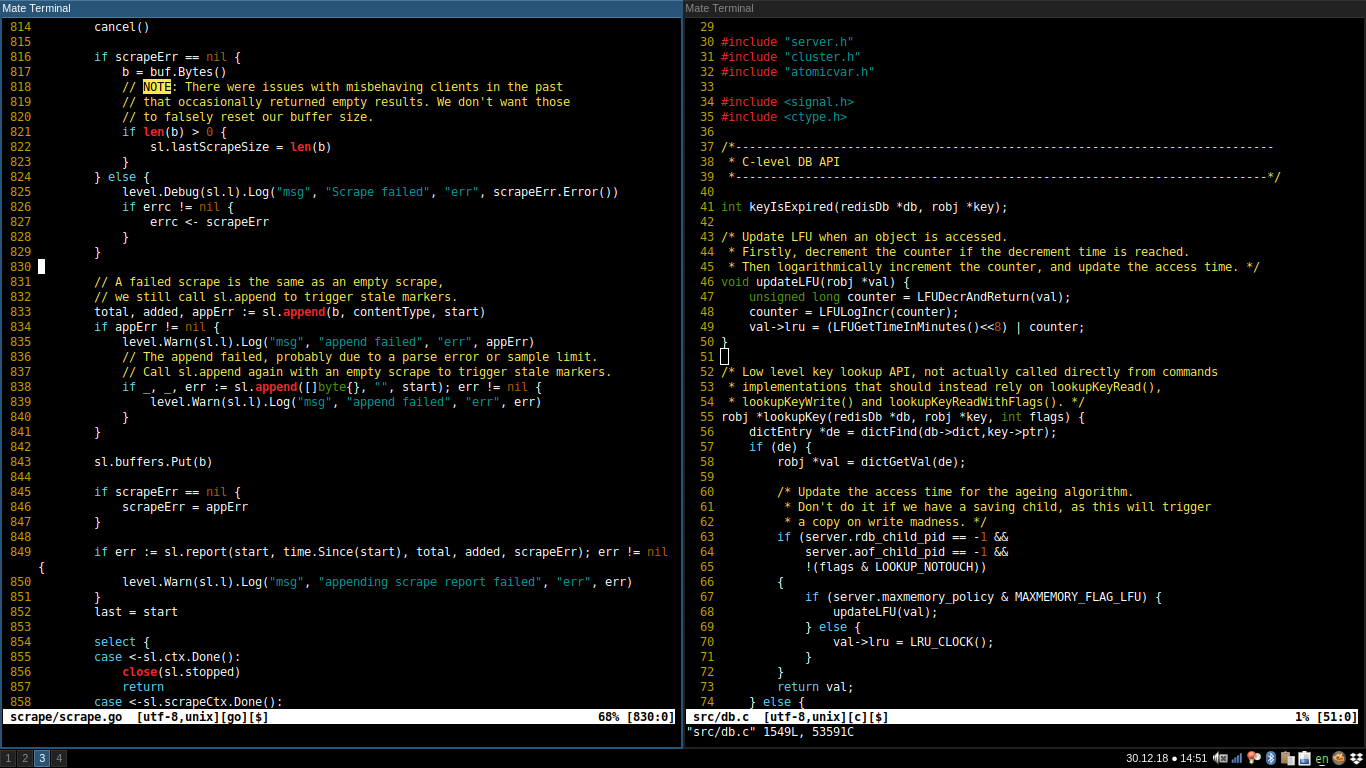- A colorful, dark color scheme, inspired by irblack and twilight. Designed primarily for a graphical Vim, but includes support for 256, 88, 16, and 8 color terminals. On a 16 or 8 color terminal, replace its colors with those in ansi-term-colors.txt for best results. This script is vimscript #2555 at Vim.org.
- A colorful, dark color scheme, inspired by irblack and twilight. Designed primarily for a graphical Vim, but includes support for 256, 88, 16, and 8 color terminals. On a 16 or 8 color terminal, replace its colors with those in ansi-term-colors.txt for best results. This script is vimscript #2555 at Vim.
Vim color schemes with 'bold' attribute removed - except for text console. Switch branch/tag. Find file Select Archive Format. Download source code. As the default vim color scheme has some issues in 256 colors, we should also provide updates on this. Search, SpellLocal, ColorColumn and MatchParen are hardly readable (see:hi under vim ). We should also avoid uses of bold attribute in vim highlighting as it can look bad especially at smaller font sizes. 256-color support in your terminal - Putty with default settings does have this. Vim has to recognize that the terminal is 256-color capable: 'set tCo=256' in your.vimrc will do it. The color scheme needs to have support for color terminals with ctermbg and ctermfg attributes for highlights, not just the gui.-versions.
After I’ve shown you Vim and explained the most essential commands, there is is another tip I’ll give to you. As described in the above linked article, Vim brings a really nice syntaxhightlighting implementation with it. Unfortunately, this is by default, depending on the file type and your monitor, difficult to read. So today I want to show you, how you can modify the Vim syntax highlighting scheme.
Change Vim syntaxhightlighting color scheme
Once you’ve opened Vim, you can change the color scheme with the “colo”-command.


Mac Vim Monokai Color Scheme
As you can see, the color scheme is set off from the command mode. In this case, the command is “colo” followed by a space and the name of the color scheme you want to use. (If you like, you can use “colorscheme” instead of “colo”. “colo” is just a shortcut to “colorscheme”.)


If you want to get a list of the installed color schemes, then just type “colo ” and press Ctrld – so you should get a list of all available schemes.
Mac Vim Color Schemes
Change Vim default color scheme
Default Vim Color Schemes
To change the pre-selected default color scheme in Vim, it must be set up in the Vim config. This config file is called “.vimrc” and can be located in your home directory (~/). You can definde the color scheme in .vimrc as you would do it directly in Vim, with just one differece: leave the “:” at the beginning of the command away. To change the default color scheme to “murphy”, the following steps would be necessary.
In .vimrc you must add the following line or overwrite it (if it already exists).
To save your changes and close the config, type in :wq. Next time you start Vim now, your self-selected color scheme is used.[aawp box=”059652983X,168050262X,1484202511″ grid=”3″ class=”aawp-grid-small”]
